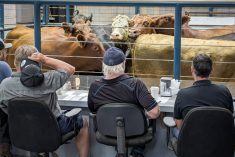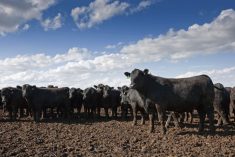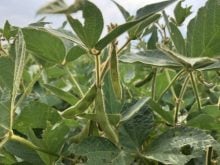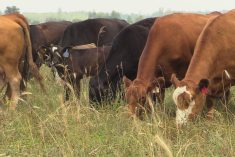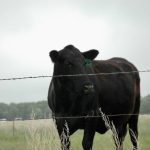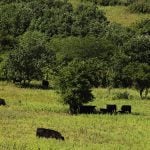Compared to last week, western Canadian feeder cattle markets were relatively unchanged. Weakness in deferred live cattle futures and uncertainty in the feed grain market tempered the upside for all weight categories of replacement cattle. Alberta packers were buying fed cattle on a dressed basis in the range of $288-$290 delivered, steady to $2 lower than last week.
There is still a backlog of market-ready fed cattle supplies, with processors scheduling delivery for the last week of June. Talk in the trade this will only be cleaned up at the end of summer. August live cattle futures remain under pressure and there’s a wall of cattle coming on the fed market during July and August. For the second week in a row, major feedlot operators were aggressive on lower-flesh 700- to 800-pounders; moderate demand characterized yearlings over 800 lbs. Finishing operators are now focusing on cattle that will be finished in the fourth quarter because feeding margins will remain in negative territory through the summer.
Read Also

U.S. grains: Soy hits 17-month high, corn to four-month top as trade braces for U.S. data
Chicago Board of Trade soybean futures rose on Thursday to their highest in nearly 17 months as traders awaited a U.S. government crop report that was expected to lower yield estimates, while also bracing for the resumption of export data to give clues on Chinese buying.
In central Alberta, larger-frame tan mixed steers with medium flesh on small grain ration with full health data weighing 950 lbs. dropped the gavel at $184; similar-genetic and -quality heifers averaging 840 lbs. were valued at $174 in the same region. Near Lethbridge, Simmental-based steers on small grain ration averaging 940 lbs. dropped the gavel at $189 and a smaller group of Hereford steers weighing averaging 1,000 lbs. were quoted at $180; black heifers weighing 709 lbs. were reported at $193. In central Saskatchewan, a smaller group of larger-frame Charolais steers with lower flesh levels weighing 835 lbs. were purchased for $202. There were not many yearlings on offer in Manitoba.
Pasture conditions have improved in eastern Saskatchewan and Manitoba. Hay crops are looking quite promising in the eastern Prairie regions and dugouts are full. Good-quality cow-calf pairs were trading in the range of $2,700-$3,100 and stronger demand was noted on bred heifers. In southern Manitoba, Angus-based steers weighing just over 600 lbs. were valued at $240 and similar-genetic heifers weighing 560 lbs. dropped the gavel at $206. North of Calgary, red mixed steers averaging 570 lbs. were quoted at $248 and Simmental-blended heifers weighing 530 lbs. were valued at $202. Steady demand was noted from Ontario and U.S. buyers in Manitoba markets. Canadian feeder cattle exports to the U.S. are up 231 per cent over year-ago levels.
Outside of southern Alberta, the barley and wheat crops will germinate under optimal moisture conditions. Farmers are starting to seed in Manitoba and eastern Saskatchewan. The trade is expecting the Canadian barley crop to finish in the range of 10.3 million to 10.7 million tonnes. Western Canada will probably have about five million to seven million tonnes of actual feed wheat given the later seeding dates. Abundant feed grain supplies will bode well for the feeder market this fall.
— Jerry Klassen is president and founder of Resilient Capital, specializing in proprietary commodity futures trading and market analysis. Jerry consults with feedlots on risk management and writes a weekly cattle market commentary. He can be reached at 204-504-8339 or via his website at ResilCapital.com.






